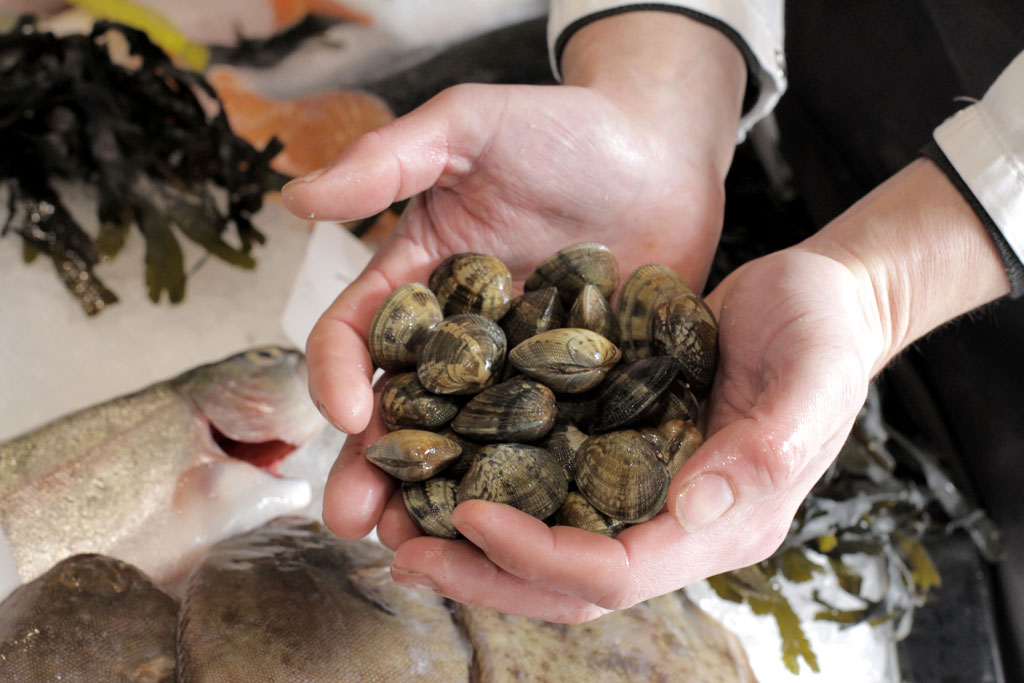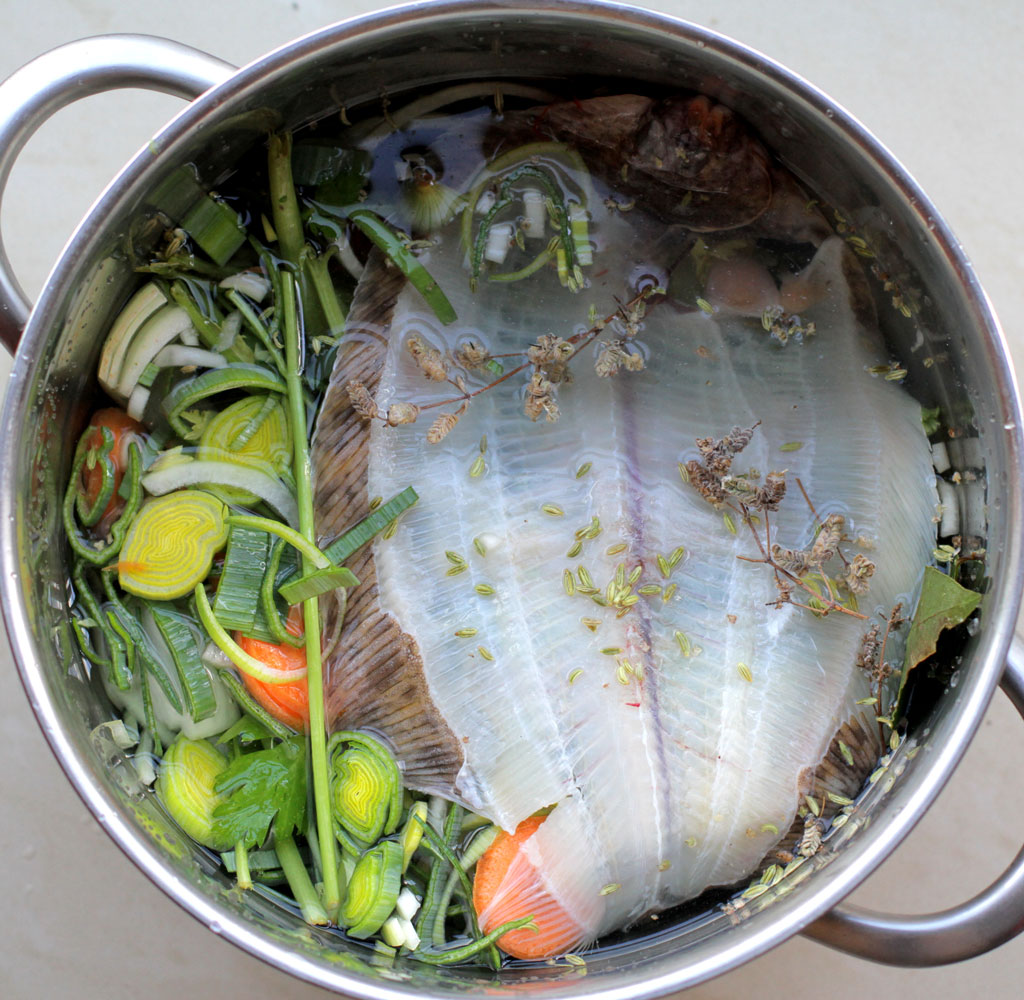March
Spring mushrooms, abundant dabs and shellfish, crocuses in bloom and a deliciously rich clam, leek and pearl barley risotto. Tom Hunt celebrates the best of the month.

March is a month full of potential: signs of spring are everywhere, crocuses are in bloom and the daffs are beginning to swell. The keen forager can even find the odd spring mushroom such as a morel or St George and you can certainly buy them from a good market. St George’s are absolutely scrumptious fried up in butter with a fresh Dover or lemon sole.
We are still, however, reliant on our stock veg and stalwarts of the winter: cauliflower, cabbage, carrots, kale, leeks, onions and swede. So it’s time to delve into the larder, discover new ingredients and get creative. At this time of year, I like to cook with grains and pulses like spelt and barley: cooked up in filling broths and stews they make a great winter warmer and go surprisingly well with fish as they soak up the rich flavours.
As the tempestuous seas calm and our fishing boats more frequently leave the harbour, fisherman start to bring back a wider variety of fish from the English coast. Flat fish have spawned and are now a good reliable catch. A good sustainable choice is dab and it is very reasonably priced. According to the Marine Conservation Society, a recent study suggests that dab is the most abundant fish species in the North Sea. Try roasting dab whole in a hot oven for 10-15 minutes with a sprig of rosemary. They are delicious and have a gelatinous texture.
Farmed Scottish halibut is also a good choice and is one of my favourites. It is farmed in smaller quantities to other fish and so has less impact on the environment. Ask your fishmonger to cut them into steaks and sear in a pan with light olive oil.

During the winter months Neptune’s larder is stocked full of molluscs from cockles, winkles, clams, mussels, rock oysters and whelks, to scallops, limpets and 100 others, many of which I’ve never heard of, let alone eaten. Between the many varieties, molluscs are readily available all year round and are now at their best. They are sweet and delicious from the cold waters. I’m going to make the most of these quirky fruits de mer and make a moreish clam risotto using pearl barley (see below).
Cockles, whelks and other lesser-eaten molluscs can be hard to buy in supermarkets but our trusty fishmongers will often stock them, or order them in especially if you ask nicely. Otherwise you can order them online from sites such as www.thecornishfishmonger.co.uk. Shellfish are best cooked fast, most within 2-3 minutes, making a delicious fast food or snack, although whelks need a bit longer. Whenever cooking bivalves in their shells, check that they all open when cooked: if any don’t, discard them.
When there is a choice between hand-gathered or dredged shellfish, choose hand gathered: this means the quality and size can be selected by the picker or diver. They are more expensive, which is why I choose to buy the cheaper species such as cockles, clams and whelks. Bivalves such as cockles, clams, mussels, oysters and scallops make a good sustainable choice as they filter the water they are in and increase the biodiversity of the local habitat. Most oysters sold today are farmed, as are mussels: cultured on ropes, they can be superb, with really clean bright shells.
Clam, leek and pearl barley risotto
Clams impart a delicate sweetness to this delicious, rich and healthy risotto. It’s very easy to cook, so take the time to make a stock to create a rounded and full flavour. Pearl barley makes an interesting alternative to rice; it has a bouncy bite and nuttiness that is very satisfying.
Ingredients
For the stock
1.5 litre fish stock made with: 300g fish bones, 1 carrot, 1 onion, 1/2 leek (just tops), 1 stick celery, parsley stalks, sprig thyme, 2 bay leaves, 1 tsp fennel seeds (optional)
For the risotto – serves 4
25g butter
1 leek, finely sliced
75g celery, finely sliced
2 cloves garlic, roughly chopped
250g pearl barley (or short grain brown rice)
100ml white wine
400g clams or cockles, washed
Few sprigs parsley, thin stalks and leaves chopped finely
1/2 lemon

Method
First make the fish stock. Grate or finely chop all of the vegetables. Cover with 1.6 litres of water, add the herbs and fennel and bring to the boil. Simmer for 30 minutes. Leave to rest for half an hour then strain through a sieve.
Gently fry the leek and celery for 5 minutes in the butter. Then add the garlic. Stir for 2 minutes. Then add the pearl barley (or rice if using). Turn to coat the grains in the oil.
Cover the pearl barley (or rice if using) in the stock and bring to a simmer. Keep stirring until the stock is absorbed. Then cover again and repeat. After about 20 minutes the pearl barley or rice should be cooked, bouncy to the bite but enjoyable to eat. Remove from the heat and season to taste.
To cook the clams, heat 100ml of white wine to boiling point. Add the cockles and place a lid on top giving them a shake. After just 1-2 minutes, when they open, add a squeeze of lemon and the chopped parsley. Turn the clams through the risotto and serve immediately.
Storage: The sturdy pearl barley reheats well. Keep in the fridge for three to four days in a sealed container. Reheat with a little extra water to rehydrate.
Tom Hunt is author of The Natural Cook: Eating the Seasons from Root to Fruit. He founded the Forgotten Feast, a campaign working on projects throughout the UK, to revive our cooking heritage and help reduce food waste and Poco, a festival café and award-winning restaurant in Bristol and (just opened) London’s Broadway Market. Click here to read his blog, Tom’s Feast.





